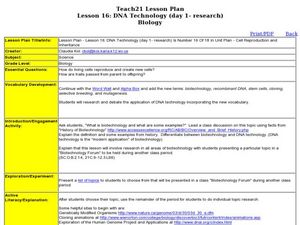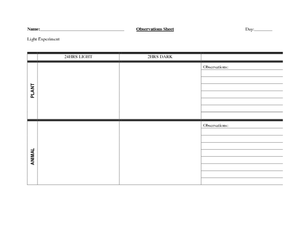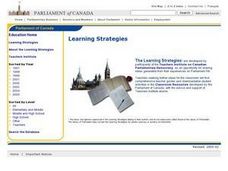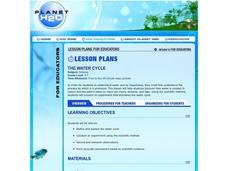Curated OER
Lesson 10: Karyotypes
Young scholars predict traits of future offspring. In this biology lesson, students study karyotyping to predict genetic disorders. They research an assigned karyotype and present information about it.
Curated OER
Native American Bartering
Fifth graders create items to barter. In this Native American bartering lesson, 5th graders read a book, design and make items, and barter with their peers. Students reflect on the experience through journal writing.
Curated OER
Lesson 16: DNA Technology
Students research different areas of biotechnology. In this biology lesson, students create a presentation about their research. They debate the topic presented and share their views on the subject.
Curated OER
Make Sense of Nature
Students participate in this program that heightens their awareness and curiosity of nature as well as their sense of adventure and exploring new surroundings. They identify and choose an object from nature after exploring it with other...
Curated OER
Alphabet Soup
Students play a game in which they use the letters of the alphabet and different motor skills for review.
Curated OER
Termite Lab
Students examine insect behavior in a lab activity. Students explore the idea of chemical specificity and the reactions of termites to a chemical found in their trail pheromone. Students watch a demonstration with termites before...
Curated OER
How Does Radiation Affect You?
Young scholars identify the use and misuse of radiation. They examine human activities that add to the exposure of radiation. They also discover how it can be useful in saving lives.
Curated OER
Organisms – Their Needs
Students compare and contrast different organisms characteristics. In this life science lesson, students design an experiment about plants and animals needs. They collect data and write their conclusion about the experiment.
Curated OER
Not Just For A Baby's Bottom
Eighth graders investigate the presence of talc in the geologic record. The different characteristics of talc is covered. The instructional activity includes background information for the teacher.
Curated OER
Students For Political Action
Students that are interested in political action are called together for a meeting and explore how the understanding among each other on issues is important and explore how they can change the world.
Curated OER
What Does It Eat?
Students, working in research teams, investigate the eating habits of crickets. They collect and record data and compare their methods and results with other groups by making tables or graphs. They sumarize their findings with posters or...
Curated OER
The Water Cycle
Students research the water cycle and identify main vocabulary associated with the water cycle. They build and observe a closed system model that demonstrates the water cycle in action.
Curated OER
Where in the World is Carbon Dixoide?
Students conduct experiments designed to detect the presence of CO2 by using a BTB that changes color (blue to yellow) in the presence of CO2. First, students experiment with the CO2 from combining vinegar and baking soda. In part two,...
Curated OER
Safe Food: It's Your Job Too!: Health
Learners get an overview of the importance of food safety and become familiar with common foodborne pathogens.
Curated OER
Already/All Ready
In this already and all ready worksheet, students choose the correct word to complete each sentence. Students complete 8 sentences.
Curated OER
Indian Drummers
For this world records worksheet, students read the text about Indian drummers going for a world record. Students complete the gaps in the text by selecting from multiple choice suggestions. This worksheet is online and interactive.
ProCon.org
Pro Con: Should Animals Be Used for Scientific or Commercial Testing?
Website explores the controversial issue of using animals in scientific or commercial testing.
Other
Elements Online: Are Animals Effective in Testing?
This site questions the use of animals, specifically in the testing of prolonged exposure to pesticides. This article argues that, although pesticides have been found "safe" through animal testing, the long-term effects on humans has not...
Other
Speaking of Research: Animal Welfare and the 3 Rs
An explanation of the 3 Rs of animal research - standards against which any animal research project is measured. They are Replacement, Reduction, and Refinement.
Other
Vibrationdata.com: Animal Astronauts
Information about some of the early animal astronauts who were launched into space to help determine the effects of space travel on human beings.
Cold Spring Harbor Laboratory
Dolan Dna Learning Center: Model Organisms
Learn about model organisms that research scientists use in lab testing.
Other
The Hastings Center: Ethics of Medical Research With Animals
A collection of articles from a variety of experts with differing points of view on the subject of using animals for scientific research. Beyond these nine articles, the site provides links to many additional studies on the subject,...























